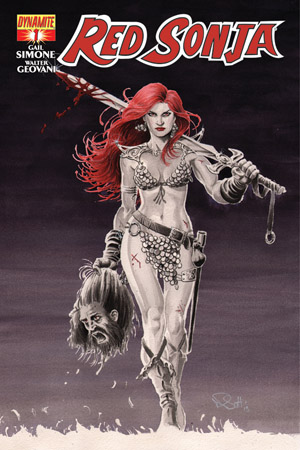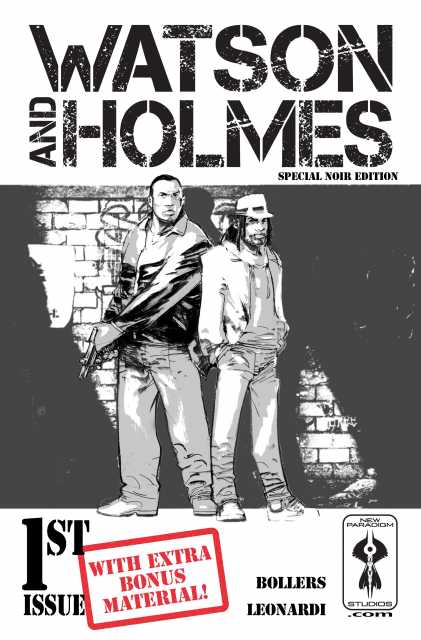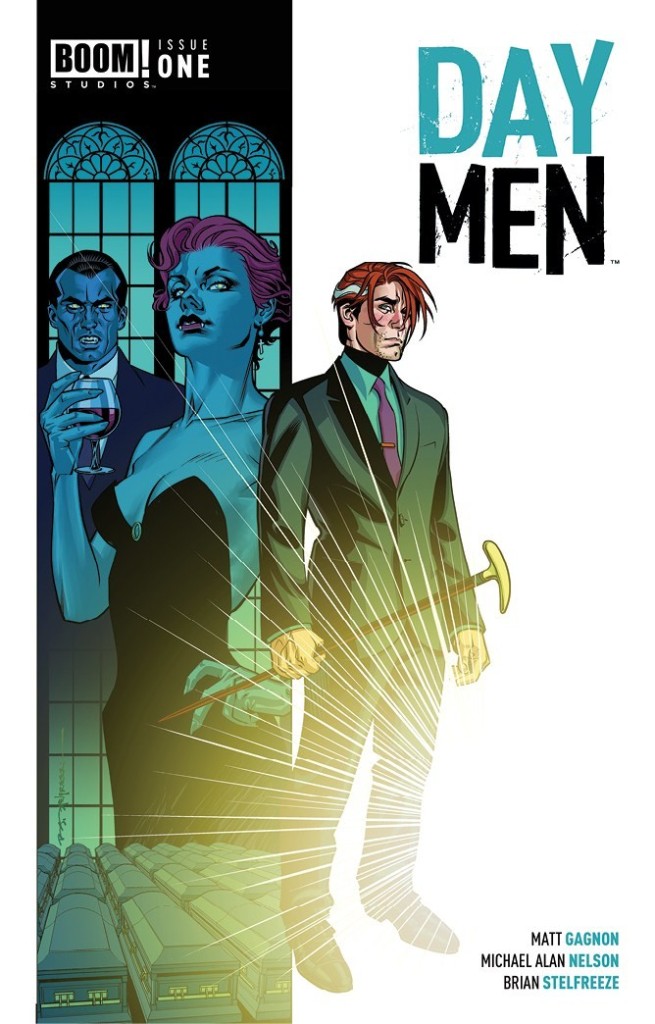It’s been a year here at Geekquality with your favorite weekly column bringing you highlights of new #1s in comics. From now on, I’ll be doing things a little differently. While I will still look at the best and the worst of new stories, the goal for year two is to really focus and separate the wheat from the chaff, keeping an eye out for new perspectives and characters Geekquality readers can care about. Which new books have great people of color or LGBTQ characters? How are female character portrayed? Who’s taking the right approach to issues like economic equality? And who’s doing all these things badly? We’re here to present the best, and call out the worst, so let’s get to it.
 First up this week we have the comic the Twitter-sphere has been buzzing about for weeks, Dynamite’s Red Sonja #1. Written by Gail Simone (Batgirl, Birds of Prey), with art by Walter Geovani (Prophecy, Witchblade), this reboot of the legendary warrior woman gives us just a glimpse into her past (Sonja was discovered in a gladiator dungeon by a benevolent King) before diving in. Simone has chosen not to mess too much with the image of the swordswoman that we know, silver bathing suit and all, but she doesn’t stay with the tried and true for long. After whooping several brigands intent on stealing form her, Sonja returns to the court of the very King who saved her. He is in desperate need of an army, while Sonja can’t wait to get rid of her courtly attire and get back into her armor. She’s a warrior’s warrior, as we’ve seen in previous iterations, but this time she has a sensitivity and compassion that stand out more than before. Sonja inspires soldiers by showing them the very babes and children they protect. She rankles men by refusing to bow and scrape but holding her own in combat. And she lets a sickly thief die in his own way, with dignity and honor, rather than send him shuffling off this mortal coil herself. She’s a true warrior woman, the kind we wish we saw more of in comics, and artist Geovani treats her with respect, drawing her in action in nearly every panel, and never just as some object of desire.
First up this week we have the comic the Twitter-sphere has been buzzing about for weeks, Dynamite’s Red Sonja #1. Written by Gail Simone (Batgirl, Birds of Prey), with art by Walter Geovani (Prophecy, Witchblade), this reboot of the legendary warrior woman gives us just a glimpse into her past (Sonja was discovered in a gladiator dungeon by a benevolent King) before diving in. Simone has chosen not to mess too much with the image of the swordswoman that we know, silver bathing suit and all, but she doesn’t stay with the tried and true for long. After whooping several brigands intent on stealing form her, Sonja returns to the court of the very King who saved her. He is in desperate need of an army, while Sonja can’t wait to get rid of her courtly attire and get back into her armor. She’s a warrior’s warrior, as we’ve seen in previous iterations, but this time she has a sensitivity and compassion that stand out more than before. Sonja inspires soldiers by showing them the very babes and children they protect. She rankles men by refusing to bow and scrape but holding her own in combat. And she lets a sickly thief die in his own way, with dignity and honor, rather than send him shuffling off this mortal coil herself. She’s a true warrior woman, the kind we wish we saw more of in comics, and artist Geovani treats her with respect, drawing her in action in nearly every panel, and never just as some object of desire.
 Upcoming indie imprint New Paradigm Studios launch their first book after a successful Kickstarter campaign, with Watson and Holmes #1. This take on the classic tales of Sir Arthur Conan Doyle depicts the main characters (indeed, nearly every character in the book) as African-Americans living in Harlem. Watson is a medical internist on his way to becoming a doctor after serving in Afghanistan, and Holmes is a local investigator who takes on unusual cases. Unlike Doyle’s detective, however, Holmes doesn’t take cases to soothe his intellectual curiosity or serve his ego; he’s a man helping people in his community. When Watson asks him why he does what he does for them, he simply responds, “Who would if I didn’t?” Writer Karl Bollers and artist Rick Leonardi have created an interesting spin on these iconic characters in a time when lots of folks are doing the same, but their take is valuable for its respect for the community that serves as the setting, and for the unique twists. Watson isn’t a Doctor just yet (and he gets a little tired of announcing it to everyone) and Holmes is not his physical superior, as is often depicted. Jon Watson is a hulking presence of a man, and his no nonsense soldier’s mind is more evident here than in any previous incarnation. Holmes himself has more trust in his fellow man than in some other versions, in particular the youth of his Harlem neighborhood who act as his web of informants, and in the gang members he befriends to garner information. The dialogue here is well crafted, with many of the characters speaking the patois of the street at one time or another, while Bollers’ Holmes has the sophisticated and smooth air of a jazz man. This is a book of considerable character all around.
Upcoming indie imprint New Paradigm Studios launch their first book after a successful Kickstarter campaign, with Watson and Holmes #1. This take on the classic tales of Sir Arthur Conan Doyle depicts the main characters (indeed, nearly every character in the book) as African-Americans living in Harlem. Watson is a medical internist on his way to becoming a doctor after serving in Afghanistan, and Holmes is a local investigator who takes on unusual cases. Unlike Doyle’s detective, however, Holmes doesn’t take cases to soothe his intellectual curiosity or serve his ego; he’s a man helping people in his community. When Watson asks him why he does what he does for them, he simply responds, “Who would if I didn’t?” Writer Karl Bollers and artist Rick Leonardi have created an interesting spin on these iconic characters in a time when lots of folks are doing the same, but their take is valuable for its respect for the community that serves as the setting, and for the unique twists. Watson isn’t a Doctor just yet (and he gets a little tired of announcing it to everyone) and Holmes is not his physical superior, as is often depicted. Jon Watson is a hulking presence of a man, and his no nonsense soldier’s mind is more evident here than in any previous incarnation. Holmes himself has more trust in his fellow man than in some other versions, in particular the youth of his Harlem neighborhood who act as his web of informants, and in the gang members he befriends to garner information. The dialogue here is well crafted, with many of the characters speaking the patois of the street at one time or another, while Bollers’ Holmes has the sophisticated and smooth air of a jazz man. This is a book of considerable character all around.
 Sadly, the same can’t be said for Dark Horse Comics’ latest offering, Blood Brothers #1. It’s the story of Nick and Tree, two vampires who’ve lived for thousands of years among us, but haven’t been on the best of behavior. Indeed, poor life choices (or undead choices, I suppose) have led them to a lowly existence as bail bondsmen in Las Vegas, scratching out a living rounding up bad guys in the City of Sin. The story is interesting, and the book is loaded with humor, never taking itself too seriously. Perhaps it should have just a bit, however. The problem here is the unfortunate stereotype of its two main characters. Nick, unbeknownst to him, is the descendant of a long dead über-powerful vampire, while Tree is merely his loud-mouthed comedic foil. The conflict in the story is Nick’s (a shadowy figure is hunting him due to his lineage), the only deep character development is Nick’s (he’s fallen in love with a human girl even though he’s conflicted about telling her the truth about his vampiric nature) and the jokes, mostly very crude sexual innuendo, are all Tree’s. Nick is a good, All-American blond with existential issues. Tree is a hard partying reprobate who’s always getting Nick into trouble. This is an ‘80s racial comedy cliché that seems to be as undying as the vampires in the book. And while the book is lighthearted, not meant to be a treatise on race relations in any way, it’s disappointing that Tree isn’t given more to do, or doesn’t show more depth of character. It would be nice if the narrative didn’t treat him as the sidekick, even if Nick (to his credit) doesn’t do so.
Sadly, the same can’t be said for Dark Horse Comics’ latest offering, Blood Brothers #1. It’s the story of Nick and Tree, two vampires who’ve lived for thousands of years among us, but haven’t been on the best of behavior. Indeed, poor life choices (or undead choices, I suppose) have led them to a lowly existence as bail bondsmen in Las Vegas, scratching out a living rounding up bad guys in the City of Sin. The story is interesting, and the book is loaded with humor, never taking itself too seriously. Perhaps it should have just a bit, however. The problem here is the unfortunate stereotype of its two main characters. Nick, unbeknownst to him, is the descendant of a long dead über-powerful vampire, while Tree is merely his loud-mouthed comedic foil. The conflict in the story is Nick’s (a shadowy figure is hunting him due to his lineage), the only deep character development is Nick’s (he’s fallen in love with a human girl even though he’s conflicted about telling her the truth about his vampiric nature) and the jokes, mostly very crude sexual innuendo, are all Tree’s. Nick is a good, All-American blond with existential issues. Tree is a hard partying reprobate who’s always getting Nick into trouble. This is an ‘80s racial comedy cliché that seems to be as undying as the vampires in the book. And while the book is lighthearted, not meant to be a treatise on race relations in any way, it’s disappointing that Tree isn’t given more to do, or doesn’t show more depth of character. It would be nice if the narrative didn’t treat him as the sidekick, even if Nick (to his credit) doesn’t do so.
 Lastly this week Boom! Studios brings us even more vampiric delight in Day Men #1, from writers Matt Gagnon and Michael Allen Nelson and artist Brian Stelfreeze, who returns to a monthly book for the first time in seven years. Day Men, or Sundogs, are the work-a-day handlers of the Vampire families, 50 of whom hold sway over the world. David Reid is the newly trained Day Man for the Virgo family, a powerful clan who rule most of the East coast of the United States. He’s partnered with the no-nonsense accountant Casey Kennedy, who manages the Virgos’ financial affairs and gives David his (often gruesome) marching orders. David cleans up messes, both literally and figuratively, and spends time getting younger vamps of the clan out of trouble. It’s an interesting concept, and a violently bloody one at that. It’s also a book as much or more about the women than the titular “Men.” Both Casey and the vampire clan leaders Kellen and Azalea Virgo are powerful women who know what they want, and how to get it. Sexuality and strength go hand in hand here, rather than balanced against one another, as we saw earlier in Red Sonja. Sonja is tough, but a certain target demographic is supposed to like her even more because she’s tough in a bikini. This has been the nature of women in comics for decades, and it’s slow to change. Kellen Virgo doesn’t wield her sexuality as a tool for manipulation – she’s in it for pleasure. When Casey rebuffs her seduction attempts, insisting they not mix business with pleasure or power trips, Kellen comments, “Pleasure is going to be very hard to find.” The men in the story are, with the exception of David, fairly standard action characters. Nybor Virgo is a spoiled selfish screw up, while Titus Pathicus is the overly macho “Champion” of House Virgo. Ultimately, it’s the women and David who make the book interesting, so be sure and check it out this week, and in weeks to come.
Lastly this week Boom! Studios brings us even more vampiric delight in Day Men #1, from writers Matt Gagnon and Michael Allen Nelson and artist Brian Stelfreeze, who returns to a monthly book for the first time in seven years. Day Men, or Sundogs, are the work-a-day handlers of the Vampire families, 50 of whom hold sway over the world. David Reid is the newly trained Day Man for the Virgo family, a powerful clan who rule most of the East coast of the United States. He’s partnered with the no-nonsense accountant Casey Kennedy, who manages the Virgos’ financial affairs and gives David his (often gruesome) marching orders. David cleans up messes, both literally and figuratively, and spends time getting younger vamps of the clan out of trouble. It’s an interesting concept, and a violently bloody one at that. It’s also a book as much or more about the women than the titular “Men.” Both Casey and the vampire clan leaders Kellen and Azalea Virgo are powerful women who know what they want, and how to get it. Sexuality and strength go hand in hand here, rather than balanced against one another, as we saw earlier in Red Sonja. Sonja is tough, but a certain target demographic is supposed to like her even more because she’s tough in a bikini. This has been the nature of women in comics for decades, and it’s slow to change. Kellen Virgo doesn’t wield her sexuality as a tool for manipulation – she’s in it for pleasure. When Casey rebuffs her seduction attempts, insisting they not mix business with pleasure or power trips, Kellen comments, “Pleasure is going to be very hard to find.” The men in the story are, with the exception of David, fairly standard action characters. Nybor Virgo is a spoiled selfish screw up, while Titus Pathicus is the overly macho “Champion” of House Virgo. Ultimately, it’s the women and David who make the book interesting, so be sure and check it out this week, and in weeks to come.

